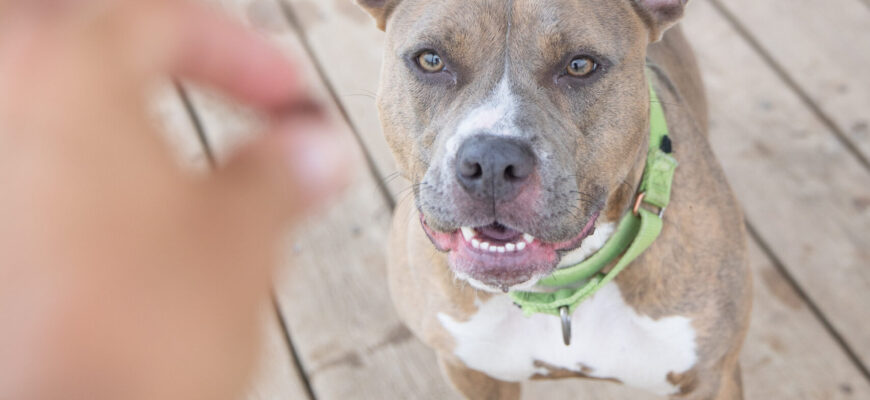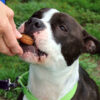Treats are an important part of teaching your dog new skills, but it can be hard to know what treats to use for your dog. When training, it is important to choose appropriate reinforcement for the learner so that they are motivated to keep learning but still able to think clearly while we are attempting to teach. There are many variables that go into choosing treats, here are a few tips that can get you started on the road to training success.
No two dogs will have all of the same preferences. Pay attention to what your dog seems to enjoy eating. Most dogs have a preference for soft, moist, smelly treats. While hard biscuit treats might still be palatable to your dog, they are often not ideal for training due to their size, calorie content, and typically blander flavor. Softer textured treats are easy and quick for the dog to eat and come with the bonus of being easily broken up into smaller pieces. Moist treats tend to be smellier, and smelly treats will be extra flavorful for your nose-driven dog. Store-bought jerky-type treats meet these criteria well and are a popular choice for training. You can also incorporate things like small pieces of cheese, hot dogs, or cooked chicken.
When filling your treat pouch try creating a “treat mix” — having access to a few different levels of treat value can be helpful during training sessions. Many trainers will mix kibble (or another nutritionally complete option, like air-dried food) with multiple kinds of treats like jerky treats or freeze-dried liver. This comes with multiple benefits. First, incorporating kibble helps keep your dog’s diet balanced and keeps you from feeding too many treats and throwing off your dog’s nutrition. Having a mixture of treats also allows you to choose to strategically give high-value treats during “jackpot” moments during training. Using a treat mix of varying values can also help increase the value of the lowest value reward (typically the kibble) over time through association, making your dog more likely to find it motivating in the future.
Next month, we will go over how to do a test to find your dog’s preferences so that you can determine the value of the treats you use.








